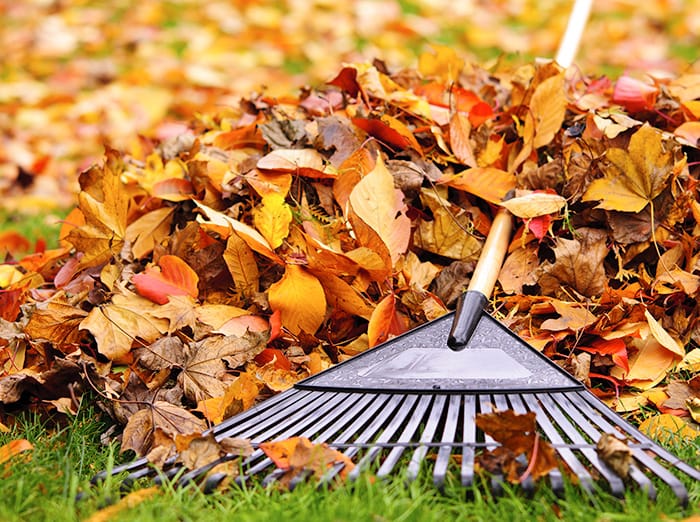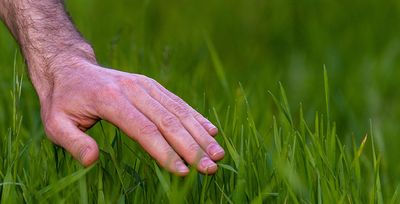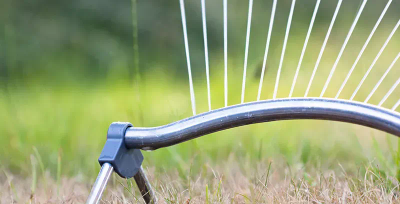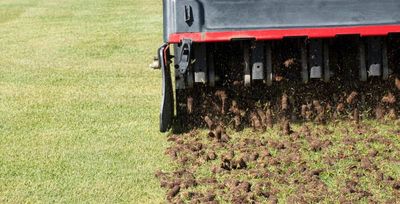Is It Better To Mulch Leaves Or Rake?
Halfway through October, we start to see leaves falling in our Tulsa yards. They fall in preparation for winter. They are often triggered by shorter daylight hours, dropping nighttime temperatures, and sometimes early frost. When leaves start to cover your yard, should you get out there and rake them up—or mulch them? That is the topic of discussion today. As you read, keep in mind that we are here to help. Feel free to contact us and speak to someone directly about questions you have about your Tulsa lawn care. Our local lawn care team is here to help.

What is leaf mulching?
Mulching leaves is a simple process. You ride over them with your mower and chop them up into tiny pieces. These tiny pieces are referred to as mulch. Once your leaves are converted to mulch, you don't have to do anything with them. All you do is leave them resting on top of your lawn. Some Tulsa residents do this, and some don't. Is mulching leaves and leaving them on your lawn a good thing or a bad thing?
The pros and cons of mulching leaves
What happens when you leave mulch on your lawn in the fall? Here are a few facts you should know:
Pros of mulching leaves
Mulch acts as a natural fertilizer. When chopped up into tiny bits, leaves easily break down and become nutrients for the soil. Leaves contain nitrogen, potassium, and phosphorus, all of which are food for your grass. You need these in your soil to support a healthy lawn, and your Tulsa lawn will benefit from a quick nutrient boost heading into winter—so leaving mulch on your lawn is a good thing.
Mulch can improve soil. If you mulch every fall and leave it on your lawn, those tiny pieces may share their nutrients with the soil, and the fibrous pieces will also add texture. What is the benefit? Soil with a good texture is more efficient at retaining moisture, which is very important for Tulsa lawns.
Mulched soil encourages earthworms. When earthworms are attracted to the soil in your yard, they can be a form of natural aeration. Their activity in the soil creates channels for moisture, oxygen, and nutrients to get down to the roofs of your grass.
Mulching reduces your effort. It is a lot of work raking and bagging leaves. With mulching, you don't have to do all that work. Simply mulch and let them sit. You're done.
Mulching your leaves reduces waste. Bagging leaves and sending them to a landfill isn't great for the environment. The eco-friendly solution is simply letting that waste sit and become food for your lawn.
Cons of mulching leaves
Too much leaf mulch can create thatch. Thatch buildup isn't good for lawns as it creates a barrier that blocks water, oxygen, and nutrients. Thatch is particularly troublesome in Tulsa yards because many of our properties have lots of clay, which compacts easily, adding to the problems that begin with thatch.
It might increase the risk of fungus and lawn disease. Mulching works best when the leaves are dry, but this is not common knowledge. When you mulch wet leaves, it can create moist conditions that, during the fall when temperatures fluctuate, can invite mold and mildew.
It isn't great if you have a thick layer of leaves. If you have a lot of leaves, you'll need to use a rake to spread them out. It isn't good to leave large amounts of leaves in concentrated spots. It can smother your grass, increase the risk of lawn diseases, and attract pests.
Keep composting in mind if you have a lot of leaves
Does your property have a lot of leaf litter in the fall? If so, mulching is not likely for you. It is better to rake the leaves and remove them. It isn't good to have concentrated piles of leaves or mulch on your lawn. But just because you have to rake the leaves up doesn't mean you have to get out the bags and start bagging them. You have another option. Create a compost heap. Why create a compost heap? The leaves can break down slowly over time in your compost heap and not smother your grass. After the material breaks down, you can use it to feed your lawn, flower beds, and garden in the spring. It is a natural fertilizer, rich in nitrogen and other nutrients.
How does Nutri-Green Lawn Care help?
No matter what you choose, Nutri-Green Lawn Care is here to support your fall lawn care needs. We offer services like aeration and fertilization that work perfectly alongside leaf mulching or raking. Our team can also help assess your lawn’s unique needs, especially if you’re concerned about thatch buildup, soil health, or nutrient needs as fall turns to winter.
Remember, it’s not just the grass that needs attention in the fall. Our Tree and Shrub Care program provides tailored services to keep your landscape’s trees and shrubs healthy and vibrant year-round. Trees and shrubs play a big role in leaf litter and keeping them healthy helps reduce stress on your entire yard.
For expert guidance and comprehensive services that take the guesswork out of lawn care for the Tulsa metro, reach out to Nutri-Green Lawn Care.

Testimonials



News, Blogs & Articles
Our Blog











